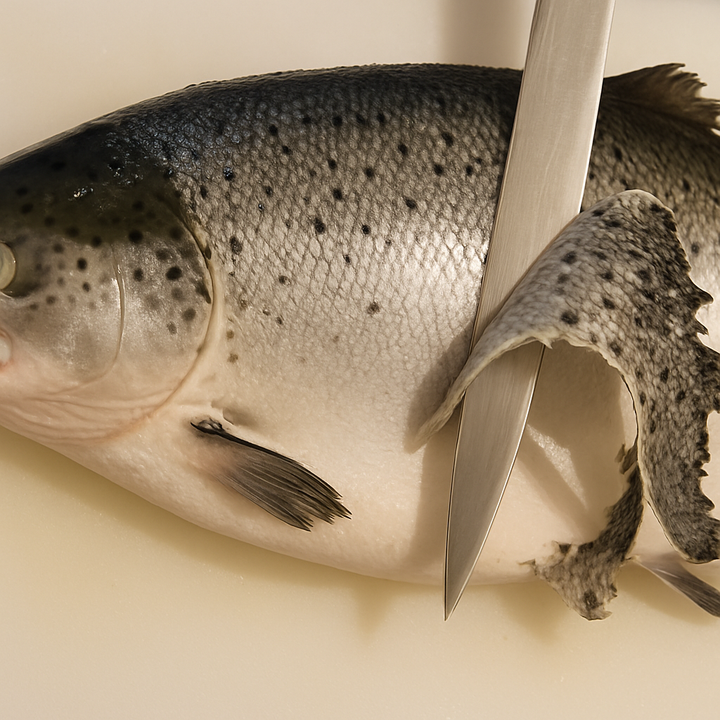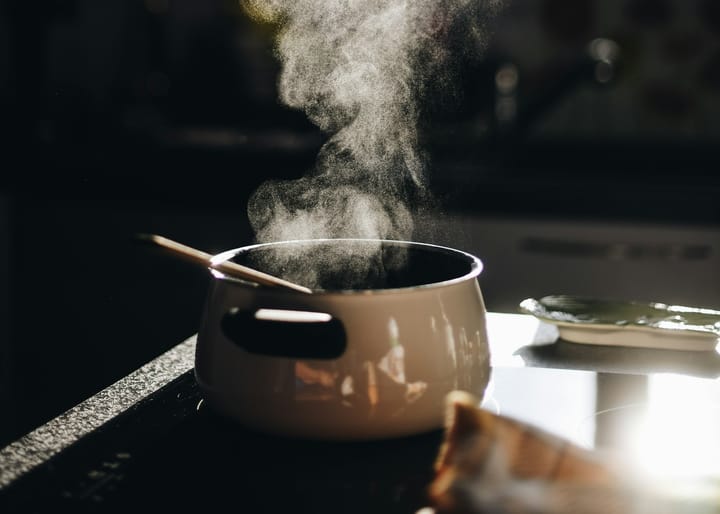Dry-Aging Fish: The Complete Guide to Chef's Top Picks
In upscale restaurants, dry-aging, especially with fish like snapper and tuna, transforms them into top-tier seafood delicacies with richer flavors through meticulous iki jime preparation.

In Asian traditions, fresh fish symbolizes a grand feast. However, the pursuit of taste often treasures the refined flavors unveiled by dry-aging, a sentiment echoed in upscale sushi eateries.
While the freshness of shellfish and oily fish like tuna and salmon is celebrated, certain fish like snapper and sea bream unveil a richer flavor palette when dry-aged.
The magic particularly unfolds in fish rich in connective tissue, where aging gracefully breaks down tissues and fibers into natural sugars and glutamates, significantly enhancing the flavor.
With meticulous preparation using the iki jime technique to ensure optimal quality and no fishiness smell, allowing the fish to age and develop a robust flavor profile is the secret ingredient to a top-tier seafood dish.
What is Dry-Aged Fish?
Dry-aged fish is a unique culinary practice that roots back to Japanese tradition, whereby fish is aged under controlled conditions before consumption.
This method, akin to dry-aging beef, enhances the flavor and texture of the fish, making it a gourmet choice for many. Below is an in-depth look into dry-aged fish, its origins, and some interesting facts.
History and Origin:
Dry-aging fish has its roots in Japanese culinary tradition, where it has been practiced for hundreds of years out of necessity due to the time it took for fish to travel from the sea to consumers' plates.
The technique has gained popularity outside of Japan and can now be found in places like Hong Kong, Austin, and Los Angeles, among others, with chefs and specialists embracing this age-old practice to enhance the flavors of fish.
Science of Dry-Aging Fish
The science of dry-aging fish centers on controlled aging to enhance flavor and texture.
Initially, the fish is housed in a controlled environment, allowing moisture evaporation which concentrates the flavor and alters texture.
Simultaneously, natural enzymes break down muscle fibers and connective tissues, tenderizing the meat and enriching the flavor by transforming proteins and fats into amino acids and fatty acids, adding to the umami and sweetness.
Factors like fish type, initial freshness, and aging conditions, including a precise temperature of 2°C, are crucial as they significantly impact the outcome.
Unlike dry-aged beef, which ages for weeks to months, fish is dry-aged briefly, usually a few days to two weeks, due to its lower fat content and differing microbial flora.
This blend of moisture reduction, enzymatic activity, and controlled conditions underpins the science of dry-aging fish, delivering a refined, gourmet culinary experience
The Process of Dry-Aging
The dry-aging process you've outlined for fish indeed embodies a thorough, meticulous approach that not only preserves the fish but elevates its flavor and texture to gourmet status.
Integrating the detailed post-catch handling and aging regimen you provided, the dry-aging process could be expanded as follows:
Capture and Initial Handling
Upon capture, the fish is swiftly dispatched using the Ike Jime technique, a method known for its humaneness and ability to preserve the quality of the fish.
Following this, the fish is immediately processed aboard the vessel where it is gutted, scaled, and gently rinsed with mild saline water.
This immediate attention ensures the preservation of the fish's freshness and initial quality, setting a solid foundation for the subsequent dry-aging process.
Preparation for Aging
In preparation for aging, it's imperative to select fish that are of high quality and exhibit a level of freshness that will stand up to the aging process.
A secondary cleaning is conducted to rid the fish of any remaining debris or unwanted parts, ensuring it's in pristine condition.
If desired, the fish can be filleted to personal preference, although retaining its whole form may better preserve moisture throughout the aging process.
Initial Aging Preparation
During the initial aging preparation, the fish is enveloped in a breathable antimicrobial fabric.
This encasing aids in preserving the fish while facilitating the necessary moisture evaporation. Following this, the encased fish is transferred to a chilled storage environment maintained at a temperature range of 4-6°C.
This is a slight deviation from the previously noted 2°C, allowing for adjustments based on the specific requirements of the fish and the desired outcomes of the aging process.
Dry-Aging
The recommended aging duration for fish varies based on the type of fish, its size, and the desired outcome in terms of flavor and texture.
However, a common timeframe ranges from a few days to two weeks. Thicker, fattier fish may benefit from a longer aging period, while thinner, leaner fish might reach the desired flavor and texture profiles sooner.
It's advisable to closely monitor the fish throughout the aging process to achieve the gourmet quality sought by culinary enthusiasts.
Monitoring and Maintenance
The monitoring and maintenance stage involves daily inspections of the fish to identify any signs of spoilage, foreign microbial, or unwanted enzymatic activity.
Alongside, regular gentle washes are administered as part of a regimen aimed at maintaining the integrity of the dry-aging process.
Final Processing
In the final processing stage, a thorough inspection is carried out to ensure the desired aging effects have been achieved and to ascertain that no spoilage has occurred.
Following the inspection, any undesirable or dried out parts are meticulously trimmed before proceeding to the preparation phase.
Preparation and Cooking
In the preparation and cooking stage, the fish is cut and seasoned according to the desired taste profiles.
Finally, it's prepared using the preferred cooking method, now ready to be savored for its enriched flavor and improved texture, all achieved through the meticulous dry-aging process.
Pairing Dry-Aged Fish with Wine and Luxurious Accompaniments
Indulging in dry-aged fish, with its enhanced savory notes, becomes a gourmet affair when paired with rich ingredients like butter and foie gras.
Extending the aging of sashimi-grade fish and incorporating them into simple vegetable and seaweed soups showcases a delightful blend of rustic and refined flavors.
Complement this culinary experience with a crisp French Chardonnay or a vibrant Sauvignon Blanc, whose acidity and slight fruitiness cut through the richness, creating a palate-cleansing contrast that accentuates the overall dining pleasure.
Top Fish Choices for Culinary Dry-Aging
When it comes to dry-aging fish for culinary purposes, chefs have a variety of preferences based on the desired texture and flavor profile they aim to achieve.
Here are some of the top choices for fish types suitable for dry-aging as preferred by chefs:
Sea Bass and Snapper
These are solid options due to their character and the presence of strong sinews that are ready to melt and soften, which can be butchered into a steak-like cut.
Fragile fillets might not stand up well to the aging process, but these fish types have a structure that holds up well to dry-aging
Amberjack and Mackerel
Similar to Sea Bass and Snapper, these fish also have a meaty structure that's conducive to dry-aging, making them a choice pick among chefs
Bluefin Tuna and King Salmon
The Bluefin and Salmon have firm and oily texture makes them suitable for dry-aging, which can enhance their natural flavors and provide a unique taste experience
Kanpachi
Kanpachi has been mentioned in the context of dry-aging by chefs in San Diego, indicating a growing preference for this type of fish in the culinary community
King Fish (Yellowtail)
Particularly meaty fish like yellowtail benefit from dry-aging as it allows the muscle fibers to relax during the aging process, creating a more tender and flavorful result
Halibut
Halibut is another fish with a firm texture that can benefit from dry-aging. The process can help to intensify its mild, sweet flavor and make it more succulent.
Conclusion
The art of dry-aging fish marries age-old tradition with modern culinary finesse.
This technique not only extends the fish's shelf life but elevates its flavor to gourmet levels, making it a riveting topic for both narrative and culinary exploration.
Among the delicacies curated from this practice is the dry-aged otoro, elegantly paired with sea grapes and a distinctive butter derived from toasted nori seaweed.
This harmonious blend of flavors, truly worth a try, showcases the fascinating fusion of tradition and contemporary culinary artistry, delighting the palate with every bite.


